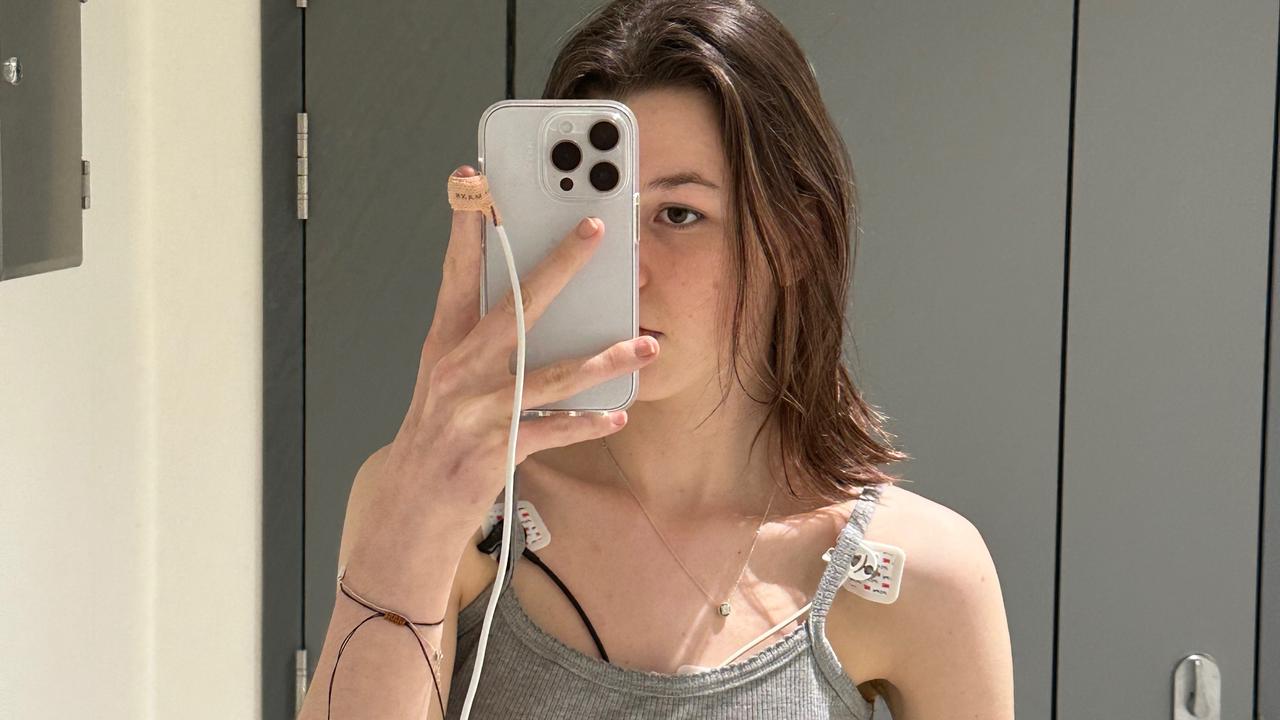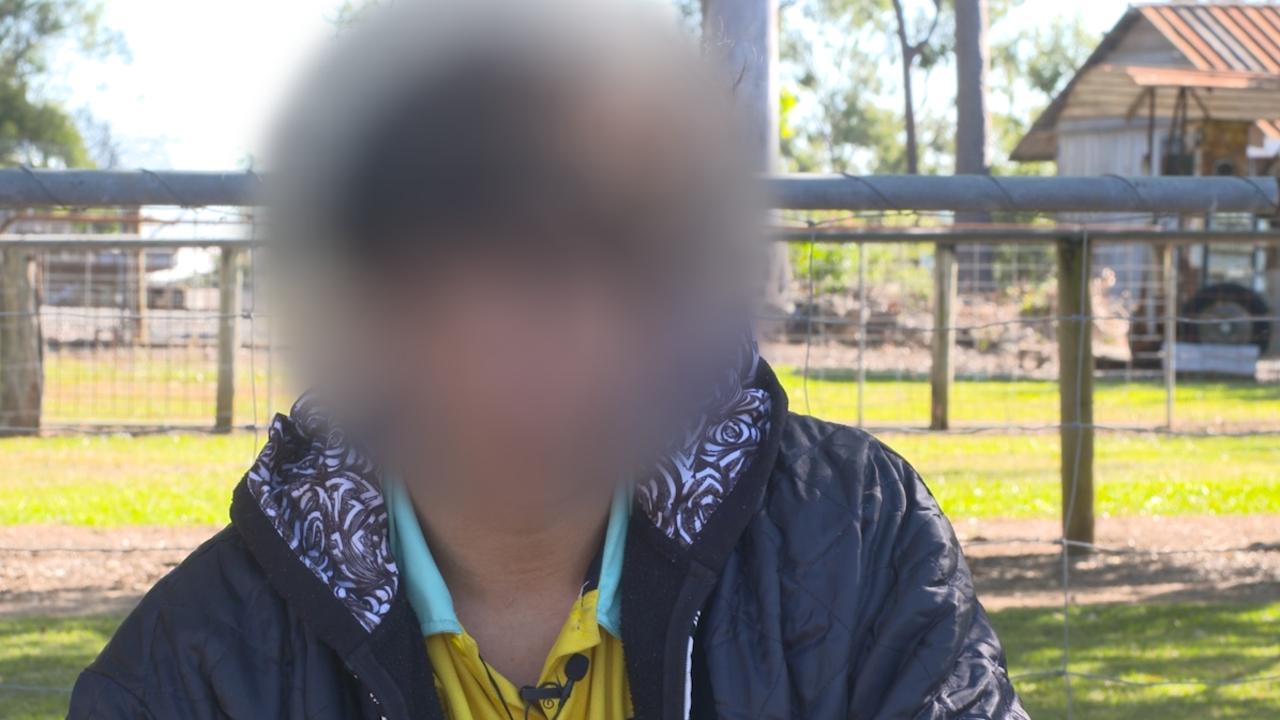SA authorities prepare to chart path away from latest Covid-19 crisis
South Australia’s road map out of the most recent coronavirus crisis will be discussed at a transmission meeting today, as the Covid crisis escalates in NSW and Queensland.
Coronavirus
Don't miss out on the headlines from Coronavirus. Followed categories will be added to My News.
South Australia’s Covid-19 authorities will on Monday debate a return to 50 per cent capacity in public venues as they chart the road map out of the state’s latest outbreak.
In a highly anticipated meeting, the transition committee will discuss allowing community and school sport from next weekend and review private gathering caps as well as mask-wearing mandates.
As a snap new Brisbane lockdown sparked AFL chaos and the NSW crisis further escalated, Police Commissioner Grant Stevens eased Victorian cross-border rules.
All South Australians were encouraged to return home as soon as possible and to reconsider the need to travel to Queensland.
SA Health and SA Police have flagged their intention to introduce further restrictions for people entering SA from Queensland.

Senior government sources said there was mounting hope of a further easing of restrictions elsewhere after Tuesday. Mr Stevens, who will make any new legal directions based on the committee’s feedback, on Saturday night said “everything is on the table for discussion”.
“I’m hopeful we can do something to increase opportunities for businesses to be a little but more prosperous,” he said.
“It’s a fine balancing act.
“We’ll see what the health advice is and see what the opportunities are for changes.
“We will review all the restrictions we’ve put on the community at the moment.
“The objective is to ease as many as possible, as quickly as possible. It really is finding that balance depending on what the risk profile looks like.”
Mr Stevens, the state Covid-19 co-ordinator, declined to elaborate on any changes from the “level 3-plus” rules but said the NSW crisis was still a threat.
After the seven-day Modbury Delta cluster lockdown – SA’s third – lifted on Tuesday, new restrictions were imposed for at least a week.
Public venues – including pubs and restaurants – are capped at one person per 4sq m, or 25 per cent density. Standing while drinking is banned.
Masks are required while shopping, on public transport, in high-risk locations, and at weddings or funerals. Home gatherings are capped at 10 people along with funerals and weddings guest caps.
Mr Stevens said 50 per cent capacity talks last week centred on how “we need to be getting there as quickly as we can but it has got to be balanced with safety”. It will headline the committee’s debate on Monday along with other public activities before any official announcement.
Mr Stevens flagged public mask wearing would “prevail for a bit longer” at indoor public spots while Education Department chiefs will brief officials on school rules.
Mr Stevens said authorities were looking at the cluster’s “tail end”. “We’ve done really well with the Modbury cluster, there’s no bad news coming out of it,” he said.
He expressed gratitude for “exceptionally good” compliance as well mask and QR code use.
“I have been pleasantly surprised at just how readily people are … mask wearing,” he said.
“They’ve heeded the message and that gives us a lot of confidence that people tuning into the seriousness of the threat that we face.”
Mr Stevens authorised the expansion of Victorian cross-border bubble from 30km, to a 70km corridor at 5.47pm Saturday, and relaxed testing rules.
He said officials were watching Queensland after swathes of the state’s southeast plunged into a three-day lockdown amid yet another outbreak.
In NSW, 210 cases were recorded on Saturday, 138 younger than 40 years old.

Calls to end ‘crippling’ venue restrictions
By Antimo Iannella
The South Australian hospitality industry has urged the state government to lift venue capacity limits as ongoing Covid-19 restrictions continue to cripple local business owners.
Under new rules following the state’s seven-day lockdown, restaurants, pubs and event companies are restricted to one patron per 4sq m, with dining and drinking available only to seated patrons.
An industry group, Hospo Owners Collective, has called for capacity limits to be raised to at least 75 per cent density from Wednesday, with a “road map” for a return to no restrictions for the first time since the onset of the pandemic last year.
The group has warned more businesses will be forced to close their doors and lay off staff unless changes are made and more clarity is provided for customers.
Kelly Markos, co-owner of several hospitality businesses including restaurant Utopia @ Waterfall Gully, Glanville Hall and Adelaide Pop-Up Weddings, said she’s lost $80,000 worth of events through cancellations in the last fortnight.

“The lockdowns for us are not the problem. We fully support what had to happen here in terms of the snap lockdown: go hard and go early, to prevent us ending up like Sydney,” she said.
“What is crippling us is coming back to 25 per cent capacity, which is virtually unsustainable.
“All we want is for the State Government to say, ‘Here’s the road map out and here’s the steps we’re going to take and here’s what we need to get there’.”
Prior to the lockdown, SA’s clubs, pubs and restaurants had been trading at 75 per cent capacity since late March, when restrictions were eased from one patron to every 2sq m – or 50 per cent capacity.
Restaurateur Chris Jarmer, owner of Jarmer’s Kitchen in Bowden, said he’s lost $70,000 in revenue in the past week from customers cancelling future events in his function room.
“I’ve got people panic cancelling left, right and centre,” he said.
“I still think the public and operators … need some sort of future map of what restrictions will look like (if there are no community transmissions).
“There’s no reason we shouldn’t get back to 100 per cent capacity if there’s nothing in the community. This is the safest city in the world.”
Mrs Markos said she feared the recent Modbury Covid cluster would prevent the state government from ever lifting density restrictions completely.
“WA went back to 100 per cent and they just had a lockdown,” she said.
“The fear in the industry is we never went back to 100 per cent before, how are we ever going to get back there now?”
Density restrictions in WA’s hospitality venues were removed last week, less than three weeks after a four-day lockdown.

Hospo Owners Collective co-founder Simone Douglas said current rules had “handcuffed an entire industry”.
“An industry on its knees, that has traded at 50 per cent capacity or less for over a year, means people are not just running out of money, they are running out of hope and you need both to survive in business,” said Ms Douglas, who owns the Duke of Brunswick Hotel.
“With no Jobkeeper and no protections, the business owner in the middle is footing a hefty bill. In the middle of winter every dollar counts if we are to keep staff employed.”

Australian Hotels Association SA chief executive Ian Horne backed calls to lift the density cap as soon as possible – and provide a plan to return to full capacity.
“The damage goes beyond the seven-day lockdown we’ve just had, it’s weeks of cancellations, of fear in the community, that serves no purpose,” he said.
“We can’t see why 75 per cent can’t happen next week and we must plan for 100 per cent … there’s a demonstrated precedent in WA.”
Isolation pay hits $2.8 million
By Andrew Hough
Almost $3m has been paid to people forced into quarantine during the state’s Covid-19 outbreaks, official figures show, as authorities issue new pleas to follow isolation rules.
Commonwealth data shows almost 2000 people have successfully received a special federal payment for lost income during the pandemic.
The $2.875m taxpayer bill includes at least 457 people who have been paid more than $685,000 because of the Modbury Covid-19 cluster.
In the past few days, there has been a surge of 244 approved Pandemic Leave Disaster Payment applications.
Authorities are, however, concerned some people maybe unaware they are eligible for the funding as they urged people to heed strict health advice and remain isolated for 14 days.
More than 20,000 people have been linked to the cluster of 21 cases after visiting almost 100 exposure sites amid concerns about confusing rules.
SA Health, which recorded on Saturday consecutive days of zero daily cases, has allowed at least 1300 people to leave isolation.
More than 4700 people remain in home quarantine or a medi-hotel.
But Premier Steven Marshall urged people to keep following health advice.

“We don’t want to have a situation where an individual might have to choose between feeding their family or completing their mandatory quarantine,” he said.
“(This) is why both the State and Federal Government have different types of payments for people forced into quarantine.
“South Australia isn’t out of the woods yet, and we need those who have been asked to quarantine to do just that, without having to worry that they won’t be getting a pay check for a fortnight.
“We don’t want any South Australian to slip through the cracks because of this pandemic.”
Under the federal scheme, a $1500 lump sum payment is made to people ordered by a health authority to self-isolate or quarantine for 14 days.
This includes if they have contracted Covid, are a close contact of a case, or they are caring for someone infectious with coronavirus or are linked to a patient.
But people are ineligible if, during their 14 days of isolation, derive any income, earnings or salary from paid work as well as if they receive any other government allowance.

Federal Social Services Minister, SA Senator Anne Ruston, whose department controls the payments, said it was designed “specifically for people who cannot earn an income”.
“We understand that isolating is tough and that’s why the Government is here to support people through that time,” she said.
“I would encourage any South Australian who is required to isolate following health orders to look into whether they are eligible for this payment.”
More than 6000 people were in enforced quarantine after being linked to high risk, tier 1 and tier 2 sites including schools, shopping centres, other retail and “super spreader” locations – Tenafeate Creek Winery, at Yattalunga, on Sunday, July 18, and The Greek on Halifax restaurant the night before.
Last week, neighbours of a sick man, aged in his 60s, were forced into isolation after he left his northern suburbs home without a mask while infectious to ask the family to mind his dog
Thanking people for their “sacrifice”, deputy chief public health officer, Dr Emily Kirkpatrick, said it was “very important” to keep quarantining for 14 days and take three Covid tests.
“We know that quarantine really is our first line of defence when it comes to stopping the spread of Covid-19,” she said.
“Combined with a rigorous testing regime, it’s the only way to stop the virus from circulating in the community.”




